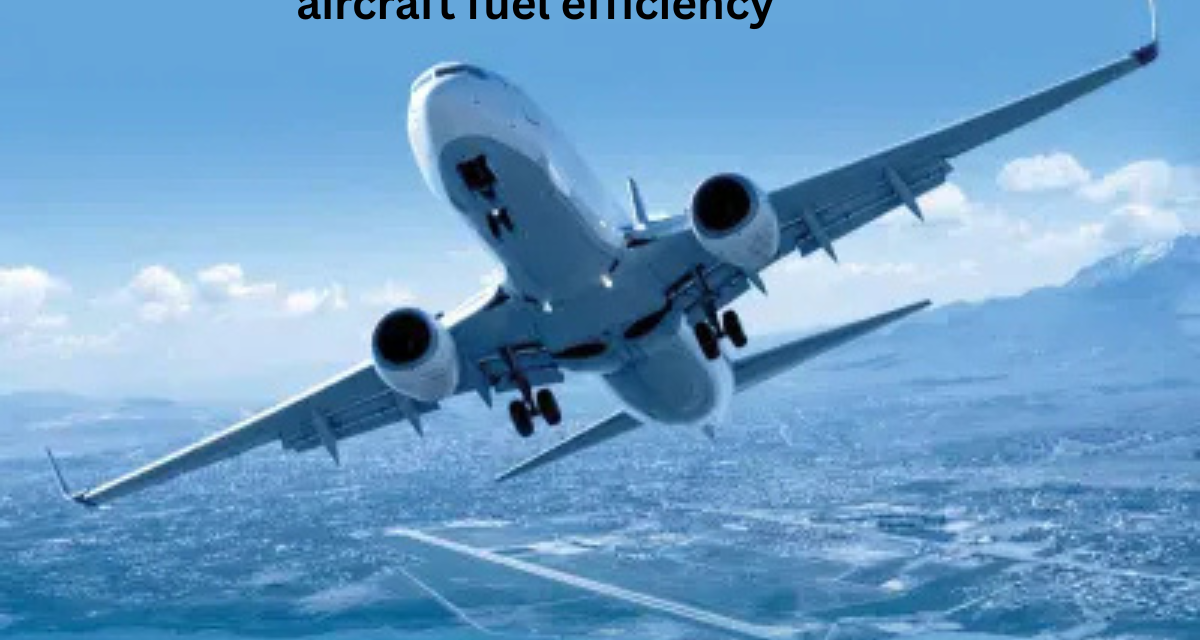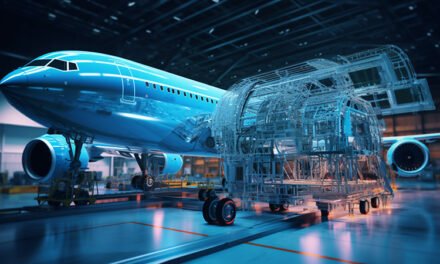Lightweight materials play a critical role in improving aircraft fuel efficiency by reducing overall weight, which directly impacts the amount of fuel required to operate the aircraft. Since fuel consumption increases with weight, even small reductions in an aircraft’s mass can lead to significant improvements in fuel efficiency, lower emissions, and cost savings. Here’s how lightweight materials contribute to these benefits:
1. Direct Fuel Efficiency Gains
- Weight-to-Fuel Ratio:
- For every kilogram of weight saved, fuel consumption decreases, particularly over long-haul flights.
- Studies estimate that reducing an aircraft’s weight by 10% can improve fuel efficiency by up to 6-8%.
- Reduced Drag:
- Lighter aircraft can achieve better aerodynamic performance, lowering drag and further reducing fuel burn.
2. Use of Advanced Lightweight Materials
- Composite Materials:
- Carbon Fiber Reinforced Polymers (CFRP):
- Extremely strong and lightweight, CFRPs are widely used in modern aircraft like the Boeing 787 and Airbus A350, which are made of ~50% composites by weight.
- CFRPs are particularly advantageous for parts that endure significant stress, such as wings and fuselages.
- Glass Fiber Reinforced Polymers (GFRP):
- Often used for secondary structures due to their lightweight and cost-effectiveness.
- Carbon Fiber Reinforced Polymers (CFRP):
- Advanced Alloys:
- Aluminum-Lithium Alloys:
- These alloys are lighter and stronger than traditional aluminum, reducing weight while maintaining structural integrity.
- Example: Used in the Airbus A380 and other large aircraft.
- Titanium Alloys:
- Lightweight, durable, and resistant to corrosion, titanium is commonly used in high-stress areas like engine mounts and landing gear.
- Aluminum-Lithium Alloys:
- Thermoplastics:
- Emerging materials that are not only lightweight but also offer recyclability and improved manufacturability.
3. Structural and Design Enhancements
- Integrated Structures:
- Lightweight materials enable the design of larger, more integrated components (e.g., a single-piece wing), reducing the number of joints, fasteners, and associated weight.
- Thin-Walled Components:
- Advanced materials allow for thinner, lighter walls in fuselages and other structural elements without compromising strength.
4. Engine Efficiency
- Lightweight Turbine Components:
- The use of lightweight materials, such as ceramics and titanium aluminides, in engines improves fuel efficiency by reducing rotational mass.
- Higher Operating Temperatures:
- Lightweight materials like ceramic matrix composites (CMCs) can withstand extreme temperatures, improving engine thermodynamic efficiency.
5. Reduced Environmental Impact
- Lower Emissions:
- Improved fuel efficiency leads to reduced CO₂ emissions, helping the aviation industry align with sustainability goals.
- Noise Reduction:
- Lighter aircraft engines require less thrust, reducing noise pollution around airports.
6. Extended Aircraft Range and Payload Capacity
- Longer Range:
- Weight savings allow for additional fuel storage or extended operational range without increasing fuel burn.
- Increased Payload:
- Lighter materials enable aircraft to carry more passengers or cargo while maintaining efficiency.
7. Cost Savings
- Operational Cost Reduction:
- Fuel savings from lighter aircraft translate to significant cost reductions, as fuel accounts for a large portion of airline operating expenses.
- Maintenance Benefits:
- Many lightweight materials, such as composites, are more resistant to corrosion and fatigue, reducing maintenance costs and increasing aircraft lifespan.
8. Examples in Modern Aircraft
- Boeing 787 Dreamliner:
- Uses carbon fiber composites extensively, achieving a 20% improvement in fuel efficiency over traditional designs.
- Airbus A350:
- Features a lightweight airframe with a high proportion of composites and advanced alloys, reducing weight and improving fuel economy.
- Regional Aircraft:
- Turboprop and small jet designs increasingly incorporate lightweight materials to maximize fuel efficiency for short-haul routes.
Challenges in Using Lightweight Materials
- Cost:
- Advanced materials like CFRP and titanium alloys are more expensive than traditional materials, increasing upfront production costs.
- Manufacturing Complexity:
- Processing and assembling lightweight materials often require specialized techniques and equipment.
- Repair and Recycling:
- Composites and advanced alloys are more difficult to repair and recycle compared to traditional metals.
Future Trends
- Nano-Materials:
- Research into carbon nanotubes and graphene shows potential for even lighter, stronger materials in future aircraft.
- Recyclable Composites:
- Developing sustainable composites that can be recycled at the end of an aircraft’s life cycle.
- Additive Manufacturing (3D Printing):
- Enables the creation of lightweight, complex components with reduced material waste.













